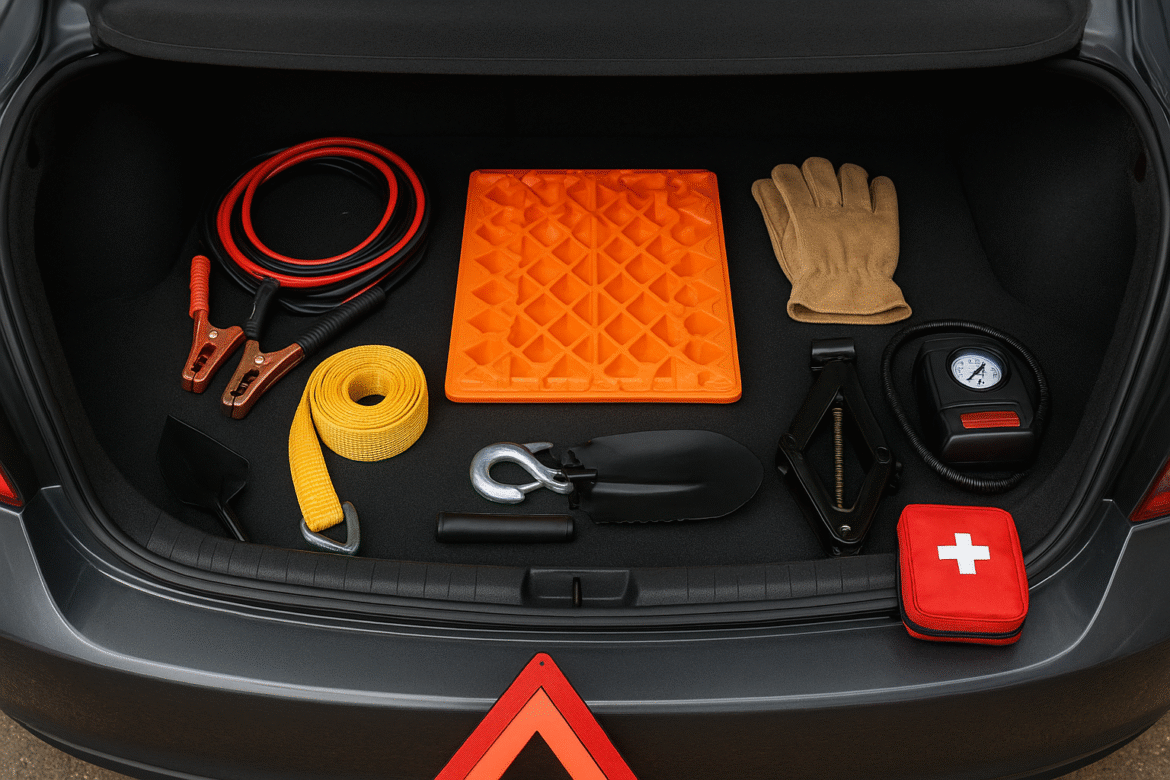If you are out of service and needing a tow-This is what You Will Need for a Stuck Vehicle: Essential Tools and Tips
Getting your vehicle stuck—whether in mud, snow, sand, or a ditch—can happen to anyone. The good news is that with the right equipment and a little preparation, you can safely and quickly get back on the road. If you’re wondering what you will need for a stuck vehicle, this guide covers the must-have tools, safety gear, and expert tips to handle the situation like a pro.
1. Traction Tools
When your tires spin without gripping, traction tools are essential.
- Traction boards or recovery tracks – Designed to slide under your tires, these provide instant grip on snow, sand, or mud.
- Sand, kitty litter, or gravel – Cheap and effective alternatives for emergency traction.
- Tire chains – Especially useful in icy conditions to give your wheels extra bite.
2. Recovery Straps and Tow Ropes
If you have a buddy vehicle nearby, a heavy-duty recovery strap or tow rope can save the day.
- Look for straps with a minimum breaking strength at least 3x your vehicle’s weight.
- Always use proper tow hooks or recovery points, not bumpers or axles, to avoid damage.
- Avoid chains for pulling unless rated for recovery—they can snap dangerously.
3. A Reliable Shovel
A folding or compact shovel should always be part of your emergency kit.
- Use it to dig around your tires and clear away snow, mud, or sand. Wyoming weather can be rough!
- Some shovels come with serrated edges for cutting through ice or roots.
4. Jack and Base Plate
If your vehicle is buried too deeply, lifting it slightly may help.
- A high-lift jack or bottle jack works well, especially for off-road vehicles.
- A base plate (or even a piece of sturdy wood) prevents the jack from sinking into soft ground.
5. Tire Repair and Air Tools
Sometimes being “stuck” comes down to a flat or low tire.
- Portable air compressor – Helps reinflate tires after adjusting air pressure for traction.
- Tire repair kit – Essential for plugging punctures when far from a repair shop.
6. Safety Gear and Essentials
Staying safe is just as important as getting unstuck.
- Gloves – Protect your hands from sharp edges, chains, or cold conditions.
- Flashlight or headlamp – A must if you’re stuck at night.
- Reflective vest and warning triangles – Ensure other drivers can see you.
- First aid kit – Always smart to carry for unexpected situations.
7. Optional but Useful Recovery Gear
- Winch – Ideal for off-roaders, allowing you to self-recover without another vehicle.
- Snatch block and D-rings – Increase pulling power and improve winch angles.
- Work mat or tarp – Keeps you dry and clean while working under your vehicle.
Pro Tips for Preventing Vehicle Recovery Emergencies
- Reduce tire pressure – Letting a little air out of your tires increases traction on sand or snow (just remember to reinflate afterward).
- Avoid spinning your tires – Spinning only digs you deeper. Apply gentle throttle for controlled movement.
- Plan ahead – Carry recovery gear before going off-road, during winter, or on long trips.
- Don’t go alone – Whenever possible, travel with at least one other vehicle for backup support.
Final Thoughts
Knowing what you will need for a stuck vehicle can make all the difference between a minor delay and a major headache. At minimum, carry traction tools, a shovel, recovery straps, and safety gear. For off-roaders or those in snowy climates, investing in a winch, air compressor, and tire chains provides added security.
By preparing ahead of time, you’ll not only protect your vehicle but also keep yourself safe and confident when the unexpected happens.

